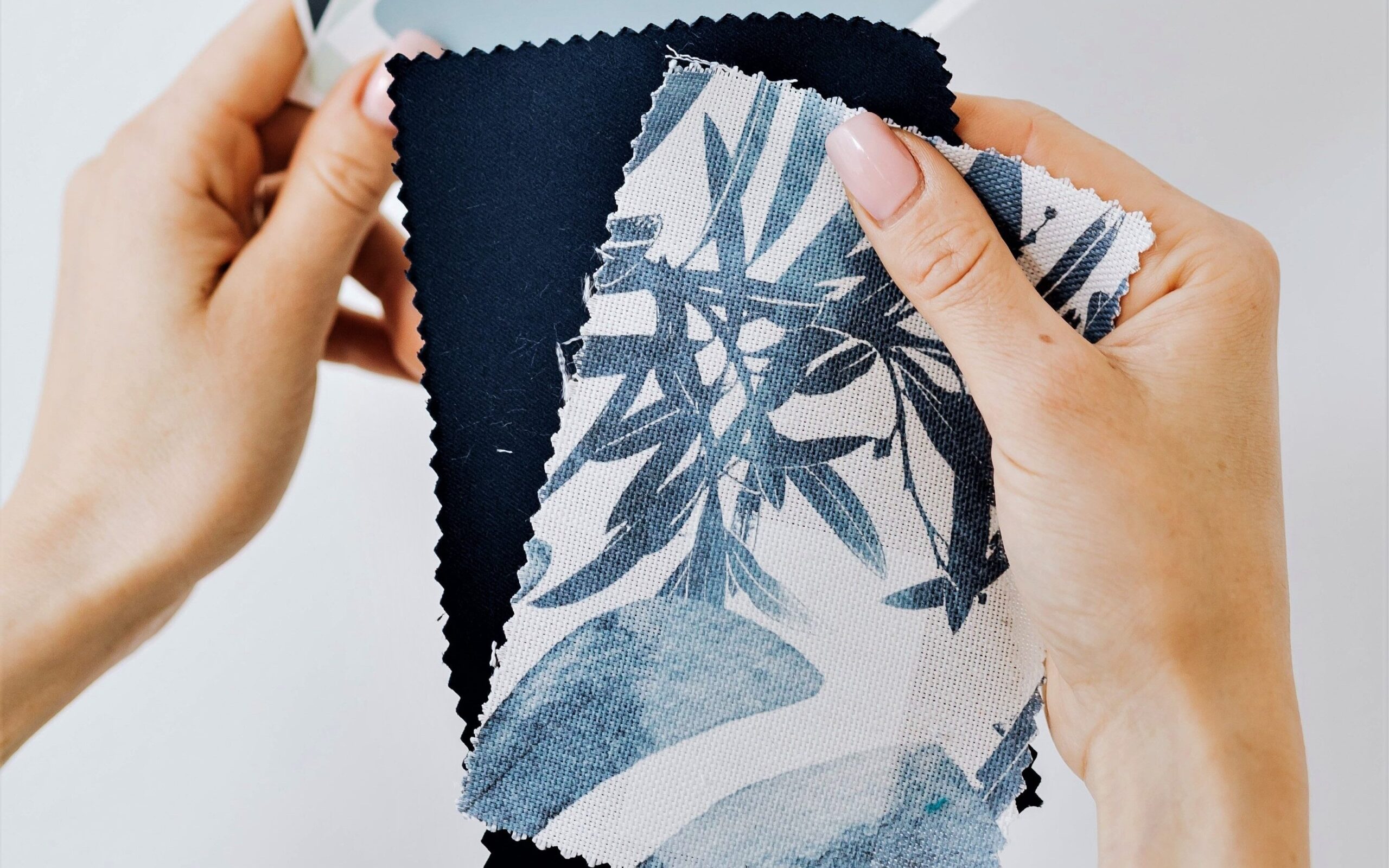Colorfast fabric refers to materials that retain their original color without fading or running. This type of fabric retains its vibrant hues even after repeated washing or exposure to sunlight, making it ideal for various applications such as clothing, upholstery, and home decor.
Colorfast fabrics typically undergo a special dyeing process or have color-locking agents applied to prevent color bleeding or fading. They are designed to be durable, long-lasting, and resistant to color change. With colorfast fabrics, you can enjoy vibrant and beautiful colors in your textiles, ensuring they remain vibrant and attractive for years to come.

Credit: johnsonsfabrics.net
Table of Contents
Factors Affecting Colorfastness
Fabric colorfastness is essential to ensure that the colors of textiles remain vibrant and intact over time. Factors affecting colorfastness include the type of fabric, dyeing process, and exposure to elements. Understanding these factors can help consumers make informed decisions about their fabric choices, particularly when it comes to longevity and maintenance.
Fabric Type
The type of fabric plays a crucial role in determining colorfastness. Natural fibers such as cotton and wool have different colorfastness properties compared to synthetic fibers like polyester and nylon. In general, natural fibers tend to have lower colorfastness, as they are more susceptible to fading when exposed to sunlight and washing, whereas synthetic fibers often have better color retention due to their chemical composition.
Dyeing Process
The dyeing process used can significantly impact the colorfastness of fabric. Fabrics that undergo a thorough and high-quality dyeing process tend to have better color retention. Properly dyed fabrics ensure that the color is deeply infused into the fibers, reducing the likelihood of fading or bleeding. On the other hand, poor dyeing practices or the use of low-quality dyes can result in diminished colorfastness and potential color transfer.
Exposure To Elements
Exposure to elements such as sunlight, moisture, and chemicals can affect the colorfastness of fabrics. Prolonged exposure to UV radiation can cause colors to fade, especially in natural fibers. Additionally, exposure to moisture and certain chemicals during cleaning or maintenance can impact the colorfastness of fabrics, leading to potential discoloration or fading over time.

Credit: www.procareofnashville.com
Testing Colorfastness
Colorfast fabric refers to textiles that retain their original color when exposed to various conditions such as washing, light, or chemical treatments. Testing colorfastness ensures that the fabric’s color remains vibrant and does not bleed or fade over time, maintaining its appearance and quality.
This process is vital in assessing the durability and longevity of colored fabrics.
When it comes to purchasing fabrics, colorfastness is an important factor to consider. Colorfastness refers to the ability of a fabric to retain its original color after exposure to various external factors, such as washing, light, and rubbing. Testing the colorfastness of a fabric helps determine its durability and how well it will hold up over time. In this article, we will explore the different aspects of colorfastness testing, including colorfastness to washing, light, and rubbing.
Colorfastness To Washing
Colorfastness to washing is a key indicator of how well a fabric will maintain its color despite regular washing. The process involves subjecting the fabric to a series of standardized tests to evaluate its resistance to fading or bleeding. Manufacturers typically conduct these tests to ensure that the fabric holds up to repeated laundering without noticeable color loss or transfer onto other fabrics.
One common method for testing colorfastness to washing is the crocking test. This test measures the amount of color transfer that occurs when the fabric is rubbed against a white cloth. Another widely used method is the color loss test, which assesses the colorfastness of the fabric by subjecting it to multiple machine wash cycles using specific detergent and water temperature.
Colorfastness To Light
Colorfastness to light is another critical aspect of testing the durability of color in fabrics. Exposure to sunlight and artificial light sources can cause colors to fade and lose vibrancy over time. Manufacturers rely on standardized methods, such as the Xenon arc fadeometer test, to simulate long-term light exposure and measure colorfastness.
During the lightfastness test, fabric samples are subjected to intense bursts of UV radiation in a controlled environment. The samples are then compared to a reference sample to assess color changes. The test duration varies depending on the fabric type and intended application, with common durations ranging from hundreds to thousands of hours.
Colorfastness To Rubbing
Colorfastness to rubbing evaluates how well a fabric resists color transfer or abrasion when rubbed against another fabric or surface. This test helps determine if the fabric is prone to color bleeding or if it can withstand rubbing or friction without significant color loss.
One widely used method to test colorfastness to rubbing is the Martindale abrasion test. This test involves subjecting the fabric to constant rubbing against an abrasive surface using a standardized pressure and motion. The fabric’s color change or loss is then assessed visually or using spectrophotometry.
In conclusion, testing the colorfastness of fabric is crucial to ensure its durability and longevity. Assessing colorfastness to washing, light, and rubbing allows manufacturers and consumers to make informed decisions about the quality and performance of fabrics. So, when choosing fabric for your next project, be sure to consider its colorfastness properties to guarantee that your creations stand the test of time.
Improving Colorfastness
Colorfast fabric is vital for maintaining the vibrancy of textiles. To enhance color retention, consider the following:
Proper Care And Maintenance
Regularly clean fabrics to prevent color fading due to dirt and stains.
- Wash colored fabrics in cold water to preserve the dyes.
- Avoid over-drying fabrics to prevent excessive heat exposure.
Use Of Colorfastness Agents
Incorporate colorfastness agents when washing to enhance color protection.
- Choose detergents with color-preserving properties.
- Consider using vinegar in wash cycles to set colors.
Applications Of Colorfast Fabric
Colorfast fabric is crucial for ensuring that colors stay vibrant and true, even after multiple washes or exposure to sunlight. Let’s delve into the various applications of colorfast fabric in different sectors.
Clothing And Apparel
- Long-Lasting Clothing: Colorfast fabric is widely used in garments to maintain the color quality over time.
- Reduced Fading: Helps apparel items retain their original colors, even after repeated wash cycles.
- Diverse Color Options: Enables a wide range of vivid and rich hues in clothing designs.
Home Textiles
- Resilient Upholstery: Upholstered furniture made from colorfast fabric maintains its appearance for an extended period.
- Stain-Resistant Curtains: Curtains and draperies with colorfast properties resist fading and staining.
- Decorative Pillows: Colorfast fabrics enhance the longevity and vibrancy of decorative pillow covers.
Outdoor Fabrics
- All-Weather Performance: Outdoor fabrics with colorfastness are ideal for withstanding sun exposure and harsh weather conditions.
- Durable Patio Furniture: Colorfast textiles used in outdoor furniture stay bright and fresh despite outdoor elements.
- Fade-Resistant Umbrellas: Umbrellas made from colorfast fabric maintain their color intensity even in sunny conditions.
Environmental Impact
When it comes to considering the environmental impact of colorfast fabrics, it’s important to explore the sustainability of colorfast processes, as well as the concerns and regulations associated with them.
Sustainability Of Colorfast Processes
The sustainability of colorfast processes plays a crucial role in determining the environmental impact of fabric production. Colorfastness refers to the ability of a fabric to retain its color without fading or bleeding during normal use and laundering. Several factors contribute to the sustainability of colorfast processes:
- Use of Eco-Friendly Dyes: One of the primary considerations in sustainable colorfast processes is the use of eco-friendly dyes. These dyes are typically free from harmful chemicals and heavy metals, reducing the potential harm to the environment.
- Water and Energy Usage: Sustainable colorfast processes strive to minimize water and energy consumption. Advanced technology and practices are employed to reduce the amount of water and energy required for dyeing, resulting in lower environmental impact.
- Recycling and Waste Management: Efficient recycling and waste management systems also contribute to the sustainability of colorfast processes. Proper disposal and treatment of dye effluents, as well as recycling and reusing dyeing materials, help minimize environmental pollution.
Concerns And Regulations
Despite efforts towards sustainability, there are still concerns associated with colorfast fabric production. These concerns prompt the need for regulations and standards to minimize their environmental impact:
- Chemical Discharge: The discharge of chemicals used in the dyeing process poses a significant environmental concern. Harmful substances can find their way into water bodies, adversely affecting aquatic ecosystems. Stringent regulations aim to control and monitor the discharge to limit environmental damage.
- Resource Depletion: The extraction and utilization of materials required for colorfast fabric production can contribute to resource depletion. This includes water usage, energy consumption, and the sourcing of raw materials. Regulations aim to ensure responsible practices and encourage more sustainable alternatives.
- Waste Generation: The production of colorfast fabrics generates waste, including dye residues and production leftovers. Proper waste management and recycling initiatives are essential to mitigate the negative impact on the environment.

Credit: johnsonsfabrics.net
Future Developments
Innovations In Colorfast Technology
Over the years, there have been significant advancements in colorfast technology, leading to improved color retention in fabrics. Innovations in colorfast technology have focused on developing more effective methods to bond dyes to fibers, resulting in fabrics that can withstand multiple washes without fading. New dyeing techniques, such as solution-dyeing and nanotechnology-based treatments, are revolutionizing the durability of color in textiles.
Trends In Colorfast Fabrics
Today, the textile industry is witnessing a shift towards sustainable and eco-friendly colorfast fabrics. Manufacturers are seeking alternative dyeing processes that minimize water usage and chemical discharge. Additionally, there is a growing demand for colorfast fabrics with inherent UV protection, stain resistance, and anti-microbial properties. These trends reflect the evolving consumer preferences for long-lasting, high-performance textiles.
Read Next: What is Polyamide Fabric
Frequently Asked Questions On What Is Colorfast Fabric
How Do You Know If A Fabric Is Colorfast?
To check if a fabric is colorfast, dampen a white cloth with water and rub it on a hidden area of the fabric. If the color transfers onto the cloth, the fabric is not colorfast.
What Makes A Fabric Colorfast?
Fabric colorfastness is achieved through proper dyeing and finishing processes. Using high-quality dyes and fixing agents helps prevent color from fading. Adequate testing for wash fastness ensures the color remains vibrant and does not bleed. Proper care, such as following care labels, also plays a vital role in maintaining colorfastness.
What Clothes Are Not Colorfast?
Clothes made from synthetic or non-colorfast materials are not colorfast. Wash these separately to avoid color bleeding.
How Do You Make Clothes Colorfast?
To make clothes colorfast, follow these tips: 1. Sort clothes by color and wash them separately. 2. Turn clothes inside out before washing to minimize fading. 3. Use cold water and a gentle cycle for washing. 4. Use a color-preserving detergent.
5. Avoid drying clothes in direct sunlight as it can fade colors.
Conclusion
Colorfast fabric is an essential element in our lives, ensuring that our clothes, upholstery, and other textiles retain their vibrant hues wash after wash. By understanding the concept of colorfastness and the processes involved in creating colorfast fabrics, we can make informed decisions when choosing and caring for our clothing and household items.
With colorfastness, we can enjoy the longevity of our favorite fabrics without worrying about fading or discoloration, ultimately adding value and satisfaction to our daily lives.
